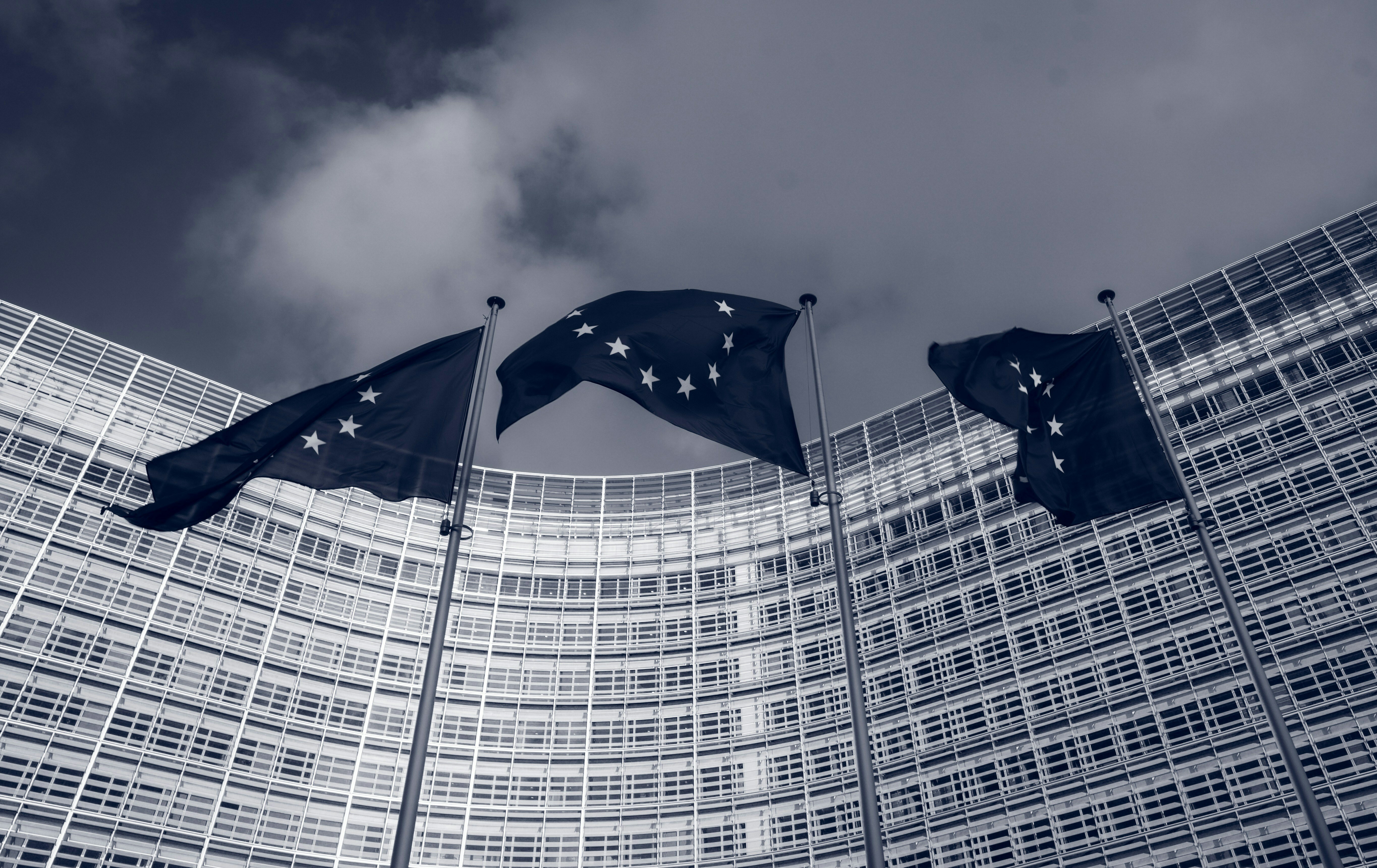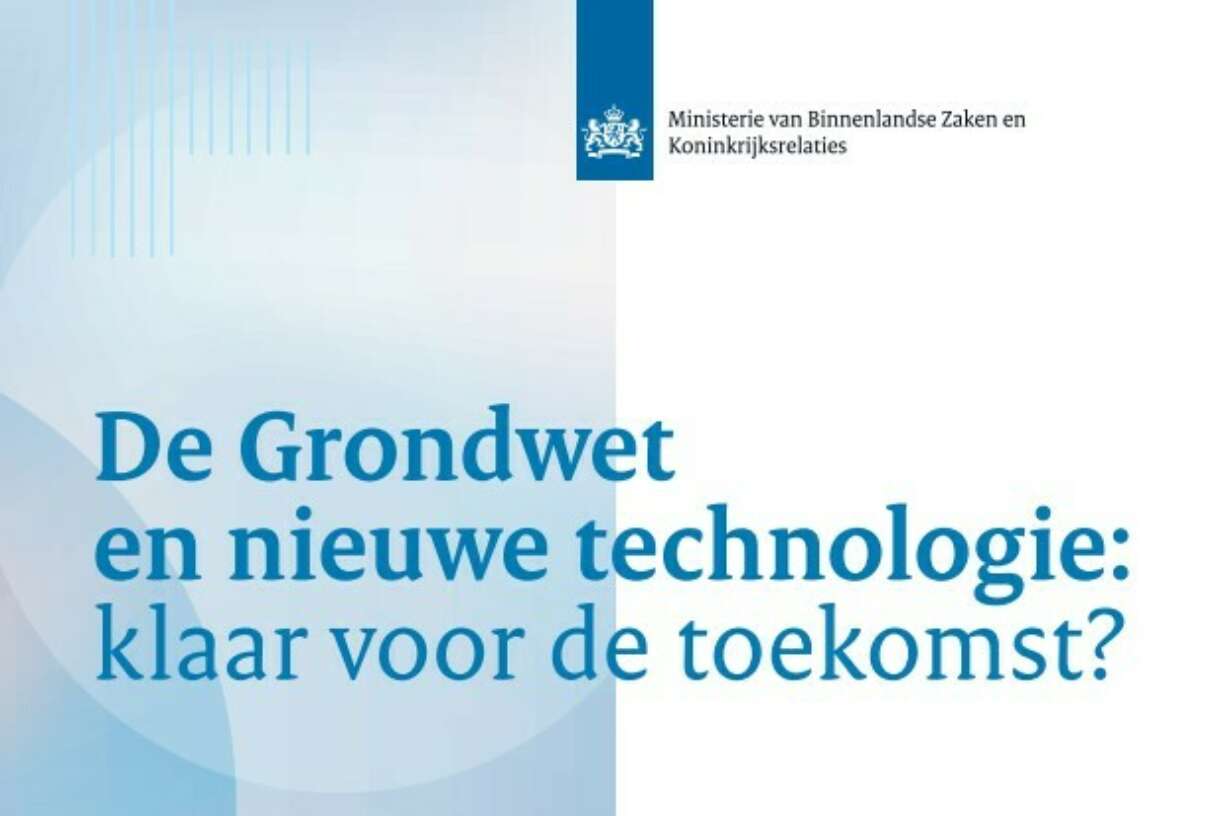October 17, 2024
From infrastructural power to redistribution: How the EU’s digital agenda cements securitization and computational infrastructures (and how we build otherwise)

In 2024, the European Union sits at the axis of vast power shifts: rising far-right influence, discontent on issues of security and migration, and increasing power of large technology companies in the US and China. In this context, the EU’s digitalization agenda feeds into two central trends in EU policy that are rarely discussed together in tech policy circles. The first trend is a commitment to European securitization1 bolstered through digital projects in the service of the military, law enforcement, and migration control. And the second is an emerging industrial policy—that securitizes European markets—with major bets on digitalization and scaling-up of tech companies for improving European competitiveness in markets and geopolitics.
Together, these two approaches are features of broader efforts to ensure the “strategic autonomy”2 of Europe—an alarmist, populist expression of a post-neoliberal strategy that constructs Europe’s loss of competitiveness as a security threat, justifying the pouring of EU public funds into markets.3 We discuss how these two trends combined increase investment into market players that produce digital services. These fundamentally transform the institutions necessary for democracy while, paradoxically, cementing the infrastructural power of a handful of US technology companies. We then ask what demands can be put to the EU to counter these developments.
Digitalizing the EU’s Securitization Project
With the EU’s securitizing framework, security threats are instrumentalized to mobilize resources, legislation, and narratives in pursuit of a militaristic, punitive, and surveillance-based vision of “security.” EU institutions fuse the concept of public safety with police, borders, and the military. Vast political resources are expended to justify this, feeding a cycle in which security logics permeate many strands of public policy. The EU’s digitalization agenda is no exception: from the allocation of resources to the increased role of digital technologies in legislation, a punitive vision of security dominates.
Securitization of digitalization (henceforth referred to as digital securitization) expands the legal basis for technological infrastructures to further surveillance and criminalization. In the last EU mandate we saw a proliferation of legislation, including the EU Migration Pact, endorsing and expanding the surveillance and criminalization of migrants.4 The Pact takes numerous steps to ramp up the digital systems used to prevent and control migration, to manage asylum processing and detention centers, and to expand an already broad regime for the monitoring of migrants.
A central legislative example of digital securitization can be found in the Artificial Intelligence Act.5 Presented with the opportunity to limit the use of AI to perform mass surveillance and discriminatory targeting, EU legislators wholeheartedly failed to include necessary safeguards in the areas of security, policing and migration control.6 They stopped short of prohibiting the worst forms of predictive policing, biometric surveillance, and harmful uses of AI in the migration context. The AI Act made police, migration control, and security actors exempt from the public transparency and accountability requirements imposed on “high-risk” AI, solidifying the existing state of opacity in which state actors use technologies to monitor, sort, and punish people.
EU securitization also confirms member-state initiatives to expand the digital infrastructures that surveil marginalized communities, including migrants, sex workers, and queer, working class, and racialized groups. We see increased recourse to technologies that target these communities, such as the “preventative identification” policing systems in the Netherlands;7 and widening narratives that justify surveillance as part of punitive solutions for the “protection” of marginalized communities, such as in anti-smuggling legislation. By increasing the scope and legal legitimacy of surveillance frameworks, the EU participates in a broader logic of racialized suspicion,8, punishment, and state violence as a “solution” to issues of public safety and social inequality.
Securitization also entails vast investments into the digital. The EU is increasingly funding security infrastructures and agencies such as Europol. Much of this investment is outsourced via contracts to private companies; as reported by Statewatch, Frontex’s 2023 procurement plan included €260 million for IT systems, and a further €180 million for border-surveillance equipment to increase deportations.9
Part and parcel of EU’s digital securitization is therefore the encroachment of the private sector (including technology and military companies) into state functions, integrating profit motives into home affairs and migration policy. This will only increase as the EU pushes through with its industrial agenda, aspiring to scale European defense industries (including surveillance systems), for example, through collaborative procurement.10 The question is: With what consequences?
Cementing Infrastructural Power of Tech Companies
Much of the EU’s digital industrial strategy is based on a superficial understanding of digital infrastructures as “compute” or “the internet,” and the assumption that AI will improve productivity across all sectors. This framing takes a product-oriented view on technology, i.e., cloud and AI products, ignoring the transformational role tech companies are increasingly playing in economic production. It mistakenly assumes that the introduction of digital products can only have a productive effect on public and private organizations, leaving their institutional power intact.
A richer understanding could be sketched as follows: computational infrastructures, i.e., cloud plus end devices, are not products but production environments for digital services.11 By now concentrated in the hands of a few companies like Microsoft, Amazon, Google, and Apple, these production environments are used not only for producing information services, but also for economic production more generally, e.g., for the manufacturing of cars12 or for public transportation services.13 The economic promise of computational infrastructures is therefore not the accumulation of subscription fees (a form of rent collected by infrastructural landlords), but the transformation of organizations technically and financially toward a model of production native to these production environments. A car company, for example, can come to look more and more like a digital services company, increasingly running its production of cars using machinery—both now considered end devices—tightly bound to the cloud. The catch is in how this model of production is organized: it means that service providers14 can insert themselves into the operations and financials of organizations, whether car manufacturers or public transportation providers. Once zipped into the internals of an organization, these service providers enter a long-term relationship that enables them to optimize operations of companies in the image of their own economic interests. In the process, the same service providers normalize computational infrastructures, cloud plus end devices concentrated in the hands of a few companies, as production environments for ever more organizations across the globe.
This framing raises some hard questions about the consequences of such a transformation through which the economic interests of tech companies sit at the gut of the operations of public and private organizations alike.15 (It also casts doubt on an industrial strategy blind to the underlying transformation of production it aims to make competitive.
From Infrastructural Power to Redistribution
These are some of the underexplored and transformational features of the EU’s two securitization agendas, clearly featured together in the EU’s industrial policy aspirations.16 Both trends, fueled by “European strategic autonomy” narratives, serve a parallel process that, even if successful, includes (a) the normalization of surveillant, punitive, or extractive technological infrastructures as policy solutions; (b) shifting public budgets away from democratic methods of social provision and toward marketized technological infrastructures; and (c) a push toward fundamental transformations of the political and economic makeup of public and private institutions. This envisions a nexus of state, institutional, and corporate actors that increasingly shape governance through technological means, a vision likely to exacerbate power imbalances through computational infrastructures.
How can technology activism meaningfully challenge these paradigms? Beyond the dominant policy responses (data protection, competition law) that often bypass racialized surveillance, distribution, extraction, and exploitation, we must ask: Why are ever-expanding resources invested in securitization if we know it does not make us safer? Why should more resources be poured into tech when the pursuit of innovation requires more of the current computational infrastructures?17 What values would guide an alternative transformation of production that serves the urgencies of climate change, as well as social and economic disparities that punitive approaches only exacerbate?
Technology policy needs a vast financial, political and ideological shift. It needs to move away from punitive, extractivist technological infrastructures and toward technologies and public policies that prioritize the needs of people, communities, and their environments—technologies and policies rooted in decriminalization, justice, and, ultimately, redistribution.
This article was first published on AI Now Institute on October 15, 2024.
Footnotes
1. Securitization is defined by Buzan, De Wilde, and Waever as a situation where an actor ‘(manages) to break free of procedures or rules he or she would otherwise be bound by’, through the use of ‘an argument about the priority and urgency of an existential threat’. In Buzan, Barry, Ole Wæver, and Jaap De Wilde. Security: A new framework for analysis. Lynne Rienner Publishers, 1998.↩
2. European Commission, The Future of European Competitiveness, September 2024, https://commission.europa.eu/document/download/97e481fd-2dc3-412d-be4c-f152a8232961_en?filename=The%20future%20of%20European%20competitiveness%20_%20A%20competitiveness%20strategy%20for%20Europe.pdf. ↩
3. Salih Işık Bora, “Neoliberal Means to Dirigiste Ends: Explaining the French Government’s Use of Heroic Industrial Policy Discourse (HIPD) in EU Politics,” French Politics, October 4, 2024, https://doi.org/10.1057/s41253-024-00263-2. In an aligned take on the impact of EU industrial policy, Angela Wigger concludes: “Alongside ascending fractions of industrial capital in technology‐intensive value chains, financial capital is not only a key beneficiary but also enjoys a powerful position: It can make a profit from the loans or equity investments without having to carry all the risks, while (organised) labour, and society at large, has no participatory role in the decision‐making about the reinvestment of accrued profits.” See Angela Wigger, “The New EU Industrial Policy: Opening Up New Frontiers for Financial Capital,” Politics and Governance 12, no. 8192 (2024), https://doi.org/10.17645/pag.8.... Going forward, we propose combining Bora’s and Wigger’s powerful analyses with the one provided in our article, which unpacks the role of digitalization. ↩
4. #ProtectNotSurveil, “The EU Migration Pact: A Dangerous Regime of Migrant Surveillance,” April 2024, https://www.equinox-eu.com/wp-content/uploads/2024/04/The-Migration-Pact-ProtectNotSurveil.pdf. ↩
5. European Union, Regulation (EU) 2024/1689 of the European Parliament and of the Council of 13 June 2024, Official Journal of the European Union, June 2024, https://eur-lex.europa.eu/legal-content/EN/TXT/?uri=CELEX:32024R1689. ↩
6. #ProtectNotSurveil, “Joint statement – A Dangerous Precedent: How the EU AI Act Fails Migrants and People on the Move,” March 13, 2024, https://www.accessnow.org/press-release/joint-statement-ai-act-fails-migrants-and-people-on-the-move. ↩
7. Fieke Jansen, Top400: A Top-Down Crime Prevention Strategy in Amsterdam, Racism & Technology Center, November 2022, https://racismandtechnology.center/wp-content/uploads/20221101-data-justice-lab-top400-report.pdf. ↩
8. Maham Hashmi and Sarah Chander, Ending Fortress Europe: Recommendations for a Racial Justice Approach to EU Migration Policy, Equinox Initiative for Racial Justice, June 2022, https://www.equinox-eu.com/wp-content/uploads/2022/06/Ending-Fortress-Europe.pdf. ↩
9. “Frontex to Spend Hundreds of Millions of Euros on Surveillance and Deportations,” Statewatch, April 24, 2023, https://www.statewatch.org/news/2023/april/frontex-to-spend-hundreds-of-millions-of-euros-on-surveillance-and-deportations. ↩
10. European Commission, “Address by Mr. Draghi – Presentation of the Report on the Future of EuropeanCompetitiveness,” European Parliament, September 17, 2024, https://commission.europa.eu/document/download/fcbc7ada-213b-4679-83f7-69a4c2127a25_en. ↩
11. Agathe Balayn and Seda Gürses, “Misguided: AI Regulation Needs a Shift in Focus,” Internet Policy Review 13, no. 3, September 30, 2024, https://policyreview.info/articles/news/misguided-ai-regulation-needs-shift/1796. ↩
12. “Major Car Manufacturer Migrates Production Floor to the Cloud,” GFT, accessed October 8, 2024, https://www.gft.com/vn/en/industries/success-stories/major-car-manufacturer-migrates-production-floor-to-the-cloud. ↩
13. Wikipedia, “Mobility as a Service,” accessed October 8, 2024, https://en.wikipedia.org/wiki/Mobility_as_a_service. ↩
14. Shimpi Das, “Top 7 Cloud Manufacturing Platforms in 2023,” Fogwing, January 10, 2023, https://www.fogwing.io/blog/top-7-cloud-manufacturing-platforms-in-2023. ↩
15. Balayn and Gürses, “Misguided.” ↩
16. European Commission, The Future of European Competitiveness, September 2024, https://commission.europa.eu/document/download/97e481fd-2dc3-412d-be4c-f152a8232961_en. ↩
17. See Ursula von der Leyen, Europe’s Choice: Political Guidelines for the Next European Commission 2024–2029, European Union, July 18, 2024, https://commission.europa.eu/document/download/e6cd4328-673c-4e7a-8683-f63ffb2cf648_en. ↩
More results /
By Roel Dobbe • November 12, 2025
By Natali Helberger • José van Dijck • Claes de Vreese • October 27, 2025
By Natali Helberger • March 06, 2025
By Kätliin Lember • November 07, 2024
By Maurits Kaptein • June 06, 2025
By Leonie Westerbeek • November 22, 2024
 What data reveals about Meta and Google’s political ad ban in the EU
What data reveals about Meta and Google’s political ad ban in the EU
By Fabio Votta • November 05, 2025
By Ernesto de León • Fabio Votta • Theo Araujo • Claes de Vreese • October 28, 2025
By Charis Papaevangelou • Fabio Votta • September 22, 2025







